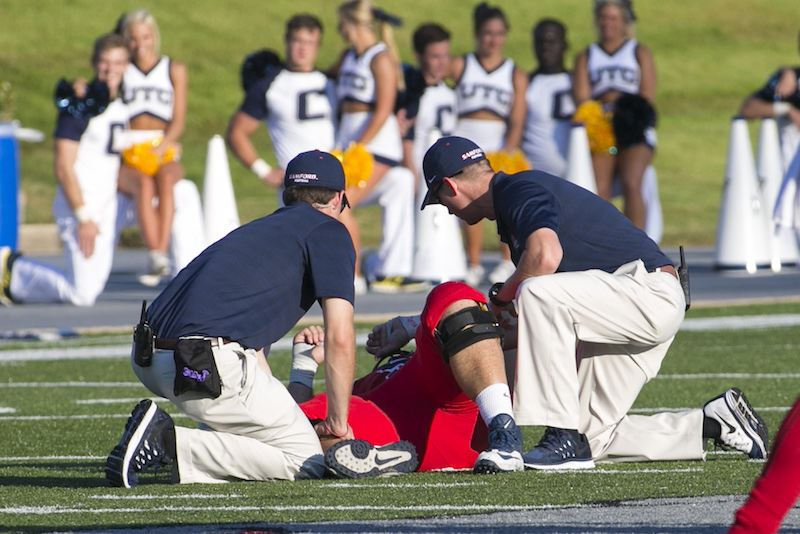
Every summer, teams and student organizations begin gearing up for upcoming competition seasons. Student athletes are frequently found on fields participating in summer camps, training and formal practices for hours at a time and in scorching July and August heat.
At all levels of sport, athletic trainers are working to prevent cases of heat cramps, heat exhaustion, heat syncope, heat injury, heatstroke and dehydration; however, Kyle Southall, instructor and director of clinical education, shares four imperative steps that any person working out outdoors can take to keep themselves safe.
“Heatstroke remains one of the leading causes of sudden death during sport. Athletic trainers must be capable of establishing effective management strategies that minimize the risk and improve the outcomes of heat-related injuries,” said Southall. “However, it is equally important that athletes are implementing prevention strategies.”
Hydration
Student athletes should be drinking water before, during and after practices. Southall shares that athletes can best regulate their need for fluids by tracking their weight before and after working out. “If an athlete loses six pounds of fluid weight during a practice, they can assess that they need to intake 96 ounces of fluids to fully replenish.”
As for how much of the athlete’s intake should be water versus sports drinks, experts suggest a 50/50 ratio after practices. There is a wide misconception that sports drinks should be utilized before exercise, but they should actually be viewed as a recovery aid in replenishing electrolytes as well as assisting with hydration. Drinking too much of a sports drink provides an excess of simple sugars, and a proper diet contains the appropriate amount of electrolytes. Southall also suggests that athletes stay away from fluids like coffee, tea and sodas which can dehydrate.
Nutrition
In preparation for and following a tough practice, student athletes should be working to keep a balanced diet. According to Southall, healthy complex carbohydrates should be eaten before a high intensity workout because they are utilized by the body for energy. Proteins are important after an intense workout because the body uses protein to repair muscle tissue and recover. Healthy fats should be utilized throughout the day systemically. It is suggested to avoid unhealthy fats and simple sugars excessively.
Acclimation
Prior to preseason training, athletes should be working to acclimate their bodies to the heat and activity that they will be partaking in. “If a student is preparing for band camp where they will be walking for long distances and periods at a time, they should begin walking in the heat weeks in advance,” said Southall. “Likewise, if a football player is preparing for football camp, they should begin running in the heat to prepare.” Acclimation activities should build in intensity over time, a period of 10-14 days ideally, and become largely as strenuous as what the athlete will experience during practice.
Recovery
Although it is summer, it is important for student athletes to take a complete rest following and in preparation for high-intensity practices. They should refrain from excessively playing at the pool or in the sun. Hydration and nutrition are also imperative to the recovery phase.
Samford’s master of athletic training program provides students with numerous opportunities to use learned skills and knowledge to improve the well-being of others. Students are often found on the sidelines of high school and college athletics in addition to sports medicine clinics and other health care facilities.
